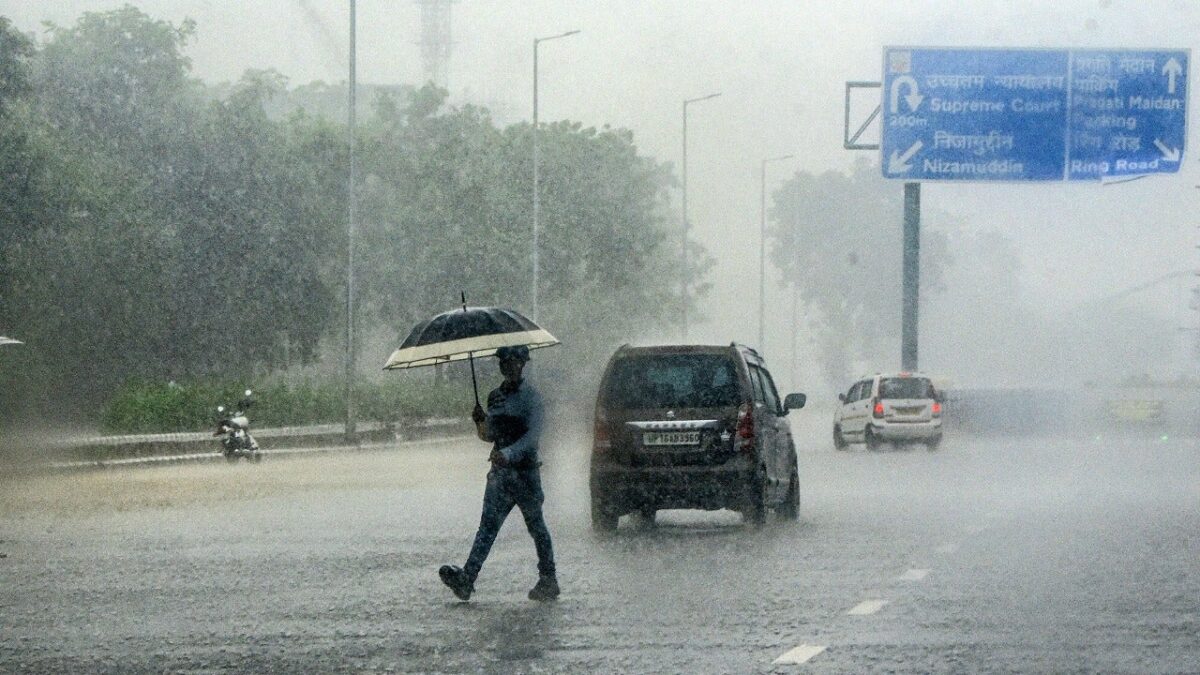Unprecedented Rainfall Shatters Decades-Old Record
New Delhi has witnessed its heaviest 24-hour rainfall in June since 1936, with the India Meteorological Department (IMD) recording 228 mm of rain from 8:30 am yesterday to 8:30 am today. This deluge significantly surpasses the average June rainfall of 80.6 mm, underscoring the extraordinary nature of this weather event.
Daily Life Disrupted
The torrential rain has caused extensive waterlogging and severe traffic jams throughout Delhi-NCR, severely disrupting daily activities. Major intersections and roads, including ITO, Moolchand, and the Hanuman Temple Intersection leading to Mandi House, experienced water levels rising to approximately three feet. This had led to a significant traffic congestion and closure of roads in key areas such as Ashoka Road, Feroz Shah Road, and Connaught Place.
Commuters Face Challenges
Commuters encountered severe difficulties this morning, with many areas submerged and traffic moving at a crawl. Despite Delhi Mayor Shelly Oberoi’s assurances on June 18 that the city was prepared for the monsoon, the infrastructure’s shortcomings were starkly exposed by the first significant rain. The heavy downpour highlighted the inadequacy of the storm drains, which were reportedly clean and ready for the monsoon season.
Relief from Intense Heat
Despite the chaos caused by the rain, it brought much-needed relief from the intense heat of the past two months. Today’s minimum temperature dropped to 24.7 degrees Celsius, 3.2 degrees below normal, providing a respite from the prolonged heatwave that has gripped northern India.
Severe Waterlogging in Noida
Noida also faced severe waterlogging, despite recent inspections by the CEO of Noida Authority and officials. Areas such as Mahamaya Flyover, Sector 62, and Sectors 15 and 16 were heavily affected, causing significant disruption to traffic and daily activities.
Monsoon Progressing Northward
The monsoon is now moving northward, bringing relief to several regions in northern India. According to the IMD, the monsoon has reached large parts of Odisha, Chhattisgarh, Vidarbha, the northwest Bay of Bengal, sub-Himalayan Bengal, and parts of Bihar. This advancement is expected to continue, bringing rain to parts of Delhi, Bihar, Jharkhand, and the Andaman and Nicobar Islands in the coming days.
Delhi’s Weather Forecast
The IMD has predicted continuous rainfall and thunderstorms for Delhi and its adjoining areas. This follows light rain and thunderstorms on Thursday, which provided slight relief from the heatwave. The maximum temperature settled at 40 degrees Celsius, with a minimum of 29.6 degrees Celsius.
Easing of Heatwave Conditions
The prolonged heatwave that has affected northern India is showing signs of abating. The IMD forecasts that heatwave conditions are unlikely across most parts of the country over the next four to five days. The monsoon is expected to spread over central India and the majority of northwest India between June 27 and July 3.
Western Disturbance Brings Relief
A western disturbance has brought some relief to parts of northern India, which has been enduring intense heat since June 7. The IMD noted that this disturbance, along with lower-level easterlies from the Bay of Bengal, has led to scattered to fairly widespread light to moderate rainfall over Jammu, Himachal Pradesh, Uttarakhand, Punjab, north Haryana, Chandigarh, and north Uttar Pradesh. Isolated very heavy rainfall and hailstorms were also reported in these areas.
Heat-Related Health Advisories
The prolonged heatwave has led to numerous heat stroke cases, especially among underprivileged communities. The government has issued advisories for hospitals to prepare for an increase in heat-related cases as the extreme weather continues.
Conclusion
The torrential rainfall in Delhi-NCR has exposed significant shortcomings in the city’s infrastructure, causing severe waterlogging and traffic disruptions. However, it has also provided relief from the intense heatwave that has affected the region. As the monsoon advances, further rainfall is expected to bring additional respite and highlight the need for improved infrastructure and preparedness in the face of extreme weather events.
